Brownstone Boys: Excavating a Cellar to Add Ceiling Height and Usable Space
Excavating a cellar is dirty and expensive process but it may help transform a dark, damp and scary cellar into usable space for an office, studio or gym.

A new space is created with a higher ceiling
Editor’s note: Welcome to the Brownstone Boys Reno, a reader renovation diary about renovating a brownstone in Bed Stuy. See the first one here. They also blog at www.thebrownstoneboys.com.
What if an entire floor of your home was dark, damp and scary — so much so you didn’t want to set foot in it? What a waste of space that you could be using as an office, studio or gym. (That’s how many people are using their dark, scary and damp cellar spaces.) One big obstacle is often the low height of the ceilings, and usually the solution is to excavate and dig down to create more height to help create an entire extra floor of usable space in your home.
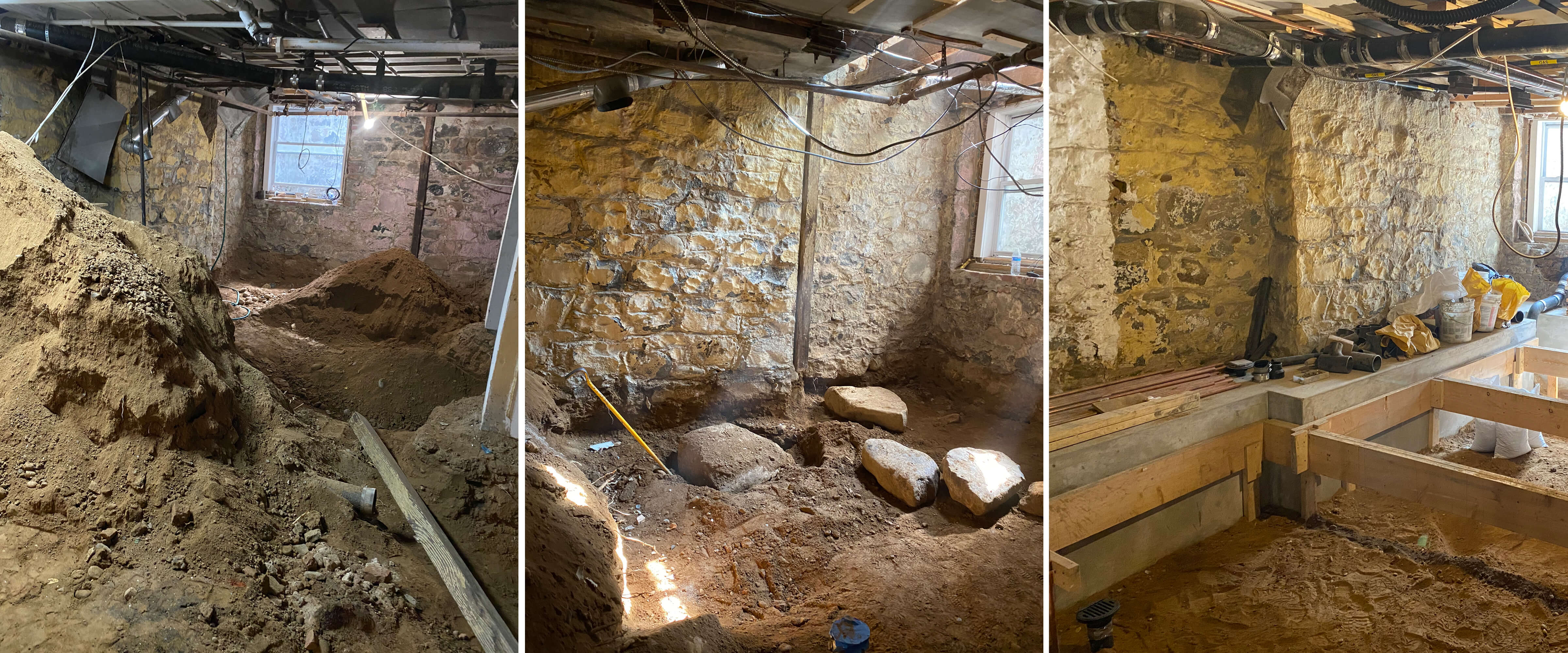
Before we can go on, we have to address the elephant in the room: What you call this area. A cellar? A basement? Both? In New York City, officially, a basement is a story of a building that is below curb level but with at least one-half of its height above curb level. A cellar is a space that has more than one-half of its height below curb level. So typically in New York City what many people refer to as the basement is actually the cellar. The basement is the story of the house, like a garden level, that has windows and doors and already meets code as a living space. So we are talking about the cellar (which is never legal sleeping space).
The first thing that you’ll need for this type of project is an architect and a structural engineer. There are many code considerations and structural concerns that need to be addressed, so although we’ll talk about basics, you’ll rely on the professionals to figure out the details.
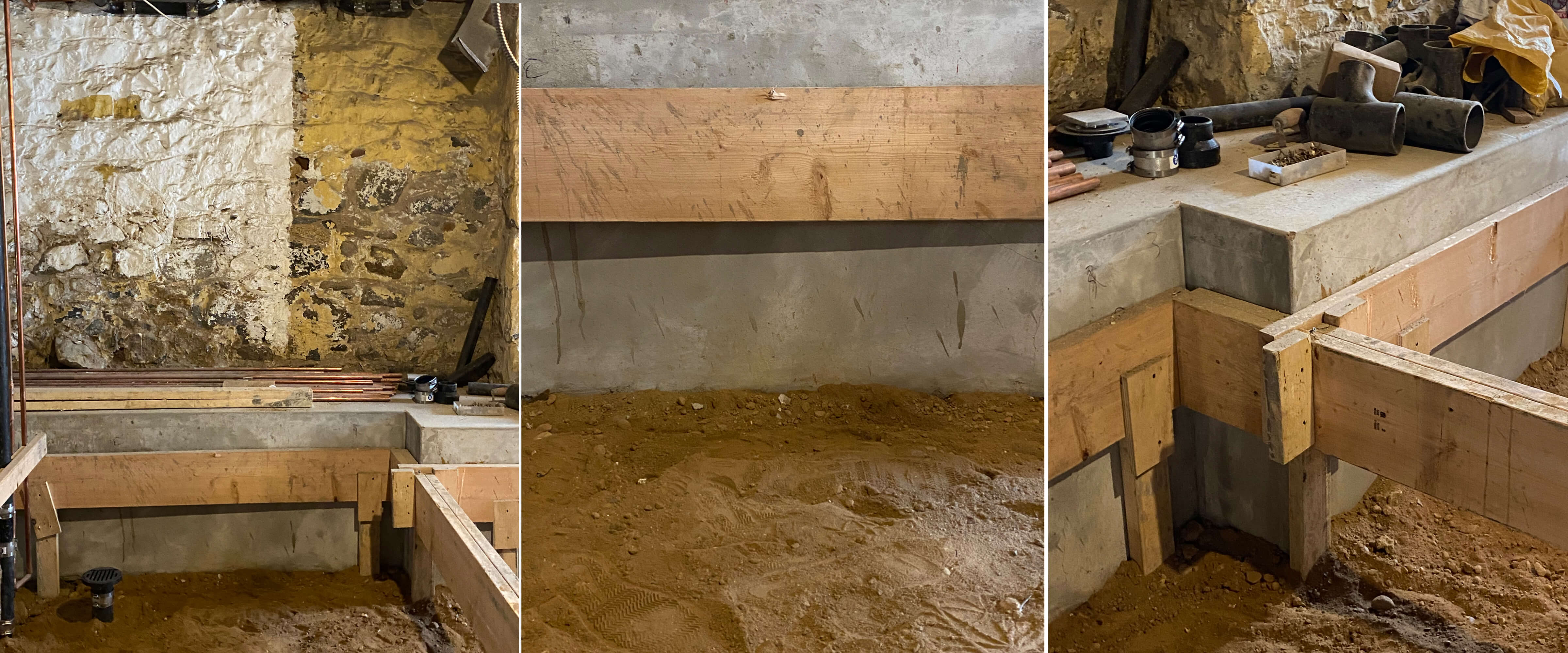
Excavating your cellar involves removing the slab and a few feet of soil. It’s a difficult and dirty job. The first thing your structural engineer will consider is how deep your house’s foundation walls go. They will likely want to dig a probe hole next to the foundation wall to determine its depth. It’s very common for the foundation walls to not be deep enough below the floor of your existing cellar to extend as low as you might want to excavate. That’s a problem that needs solving. You can’t excavate lower than your foundations walls go.
There are typically two techniques your structural engineer will take to solve this issue: Underpinning or benching.
Underpinning involves carefully excavating the soil under the foundation walls in sections, building forms, and pouring concrete to extend them down to the desired depth. It can sometimes be difficult when your house shares a foundation wall with a neighboring house. Your neighbor may not be willing to give you permission to undermine their home’s foundation to create your cellar home gym.
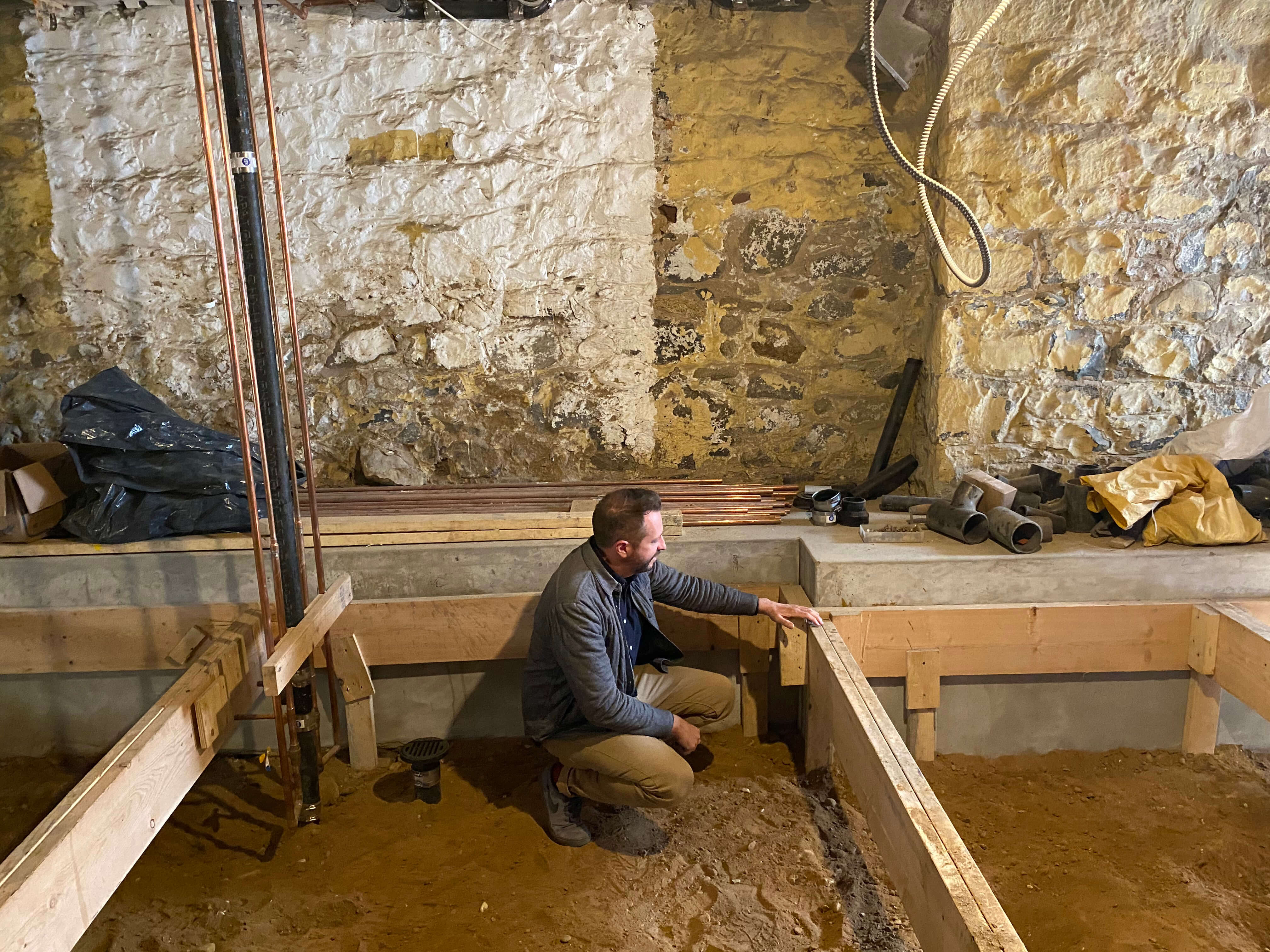
An alternative would be benching. Rather than removing the soil under the foundation walls, you leave it undisturbed to continue doing the job it’s been doing for likely over a century, but encase it in a concrete bench. The bench extends all the way around all of the foundation and acts like a retaining wall for the load bearing soil under the foundation footings. The soil on the other side of the bench can be removed to the desired level to create the extra height. One drawback is that the bench is often about 2 feet deep, which eats up some of the usable square footage of your cellar.
You can raise the ceilings in your cellar to the same height as the other floors on your home. With additional interventions, such as waterproofing from the exterior, it’s possible to create a clean, pleasant and dry space. The cellar can be made over into an entire extra floor of accessory space. Excavation can be an expensive endeavor, clocking in at $80,000 for the labor and perhaps $15,000 for the engineering, depending on the extent of the project. But for most people who take it on, having an entire floor of their home too frightening to enter is a price too high to pay, and the expense is worth it.
[Photos by Brownstone Boys unless noted otherwise]
Related Stories
- Brownstone Boys: The Lowdown on Leveling Floors
- Brownstone Boys: How to Maximize Natural Light in a Brooklyn Townhouse
- Brownstone Boys: When Do You Need a Structural Engineer?
Email tips@brownstoner.com with further comments, questions or tips. Follow Brownstoner on Twitter and Instagram, and like us on Facebook.


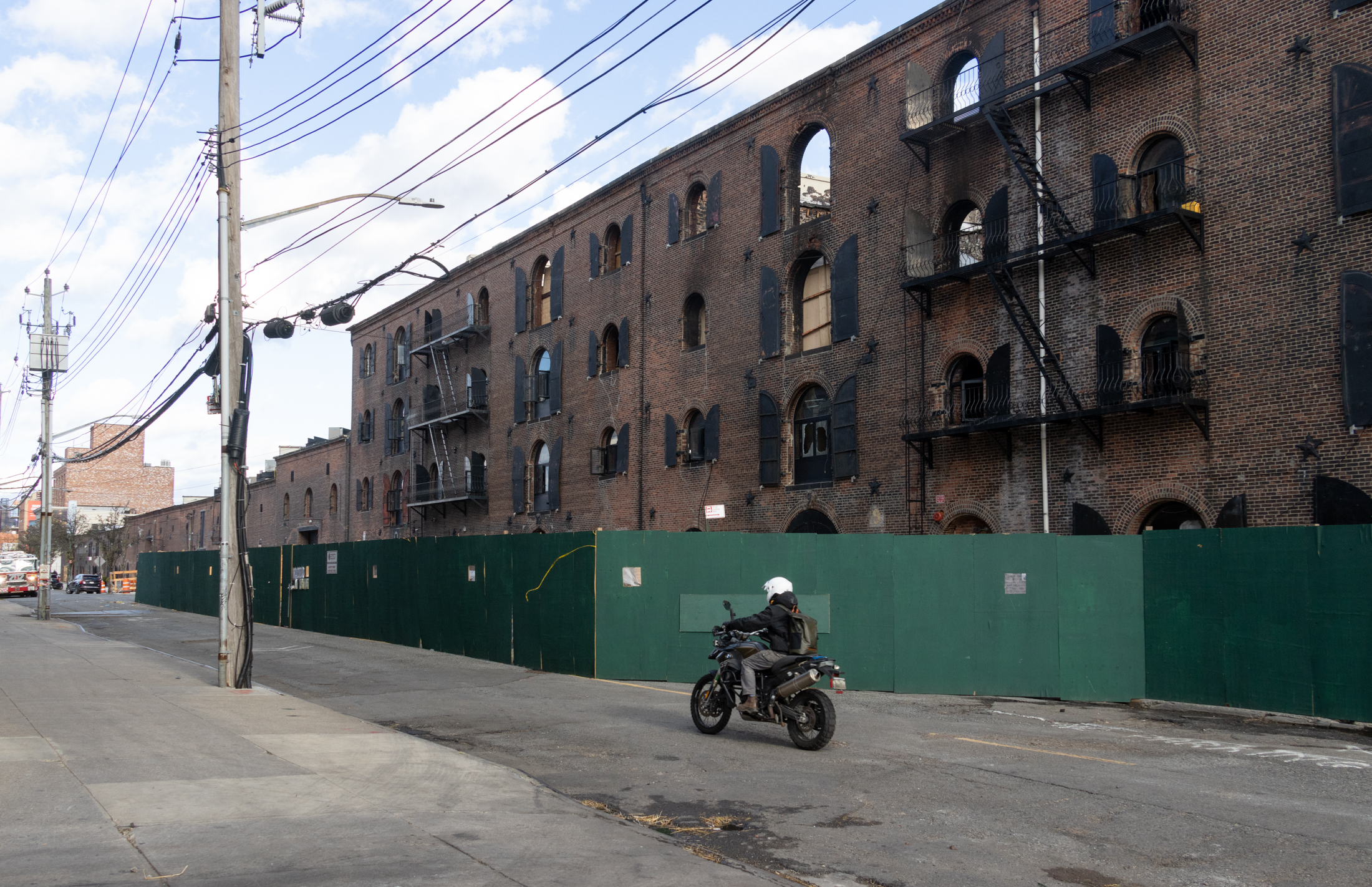

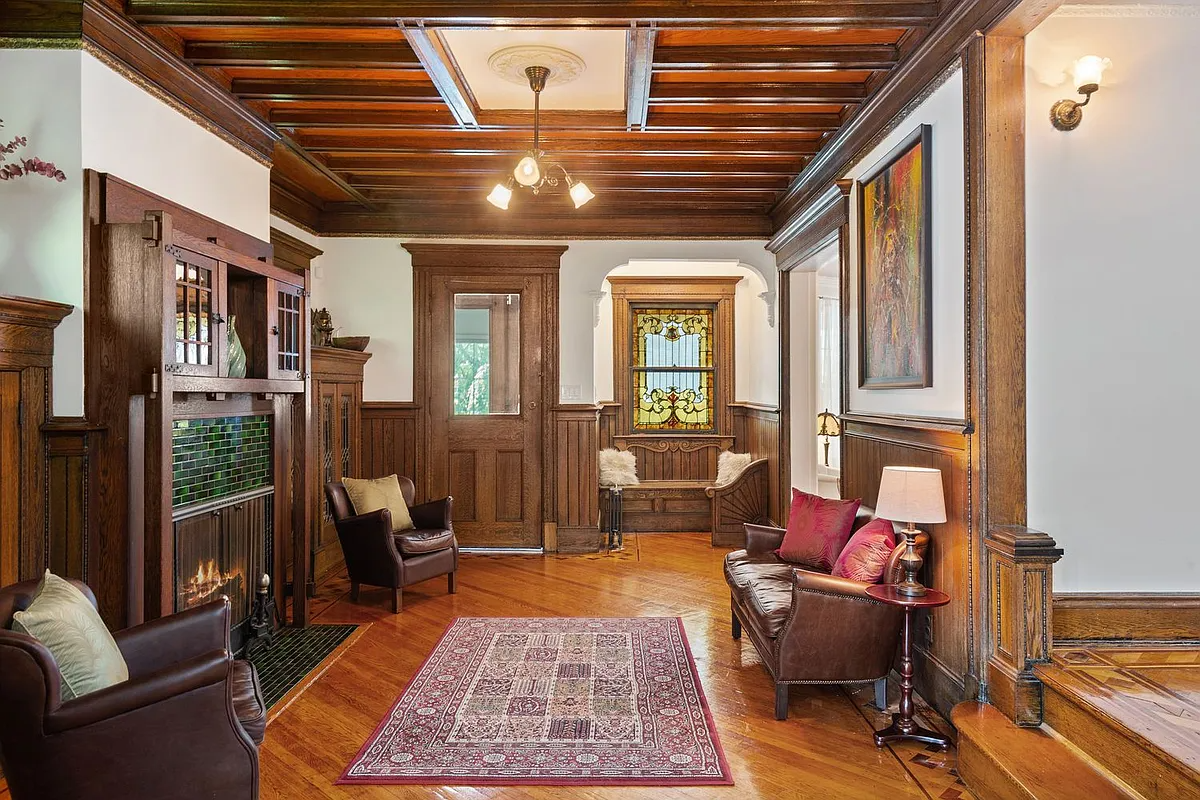
What's Your Take? Leave a Comment